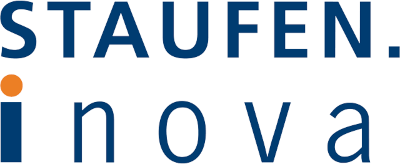
Growth and the demanding supply situation challenge all companies
Digitalization and disruption are changing the construction industry
According to the Swiss Ministry of Economic Affairs, nominal construction investment in Switzerland performed well in 2021. The KOF Baublatt Outlook reports that investment in the construction industry is expected to grow steadily in 2022. The KOF Baublatt construction indicator even refers to the expansion as significant. As such, all economic signals are go. Companies that have worked on their market positions, their service portfolios (products and services), their processes and their organizations should be able to make good use of the economic momentum. On the other hand, the demanding supply situation with upstream products means that even well-positioned companies cannot fully exploit the potential of the favorable economic climate. How should companies position themselves to facilitate growth (top line) and keep costs under control (bottom line)?
Our Innovation & Operations framework offers companies clear guidelines for action. The four fields span the arc from demand to supply:
1. Portfolio deals with all customer aspects
2. Innovation and Technology closes the gap between customer needs and the company’s range of services
3. Supply Chain Network combines the procurement market with the own company on a national and international level
4. In Operations, the actual provision of services is performed in a way that conserves resources as much as possible
At Staufen.Inova, we draw from a wealth of successful projects, whether in specific technical areas such as supply chain, production, distribution or portfolio streamlining, positioning and development, or from challenging transformations of entire organizational units.
Concepts and solutions
Almost all projects in the construction industry are characterized by long project and supply chains. If any of the companies participating in a project fails to deliver on time or at all, every partner in the project chain and the supply chain run into difficulties.
Yet, oftentimes, changing suppliers is a very difficult process due to the project characteristics and the approval and objection procedures. So it is all the more important that all parties involved work closely with one another in a spirit of partnership. The processes should be as efficient and smooth as possible, not just for OEMs and system suppliers, but also for service suppliers.
With our expertise, we can support you in doing so and will work with you to optimally configure your supply chain.
There is hardly any production in industry that does not already employ “lean” practices. For decades, the methods and culture of lean management have contributed decisively to the success of companies in production. These principles can also be easily implemented in both the construction and pre-production industries. We have been able to show in numerous projects just how these principles have allowed effectiveness and efficiency to be positively developed.
Other efficiency gains can be achieved especially with smart factory solutions, networking and digitalization. Moreover, lean management has just begun to establish itself in the indirect areas – from purchasing to administration to sales. Ignoring lean principles is often the root cause, leading to bottlenecks in the value stream and adversely affecting overall throughput times or customer satisfaction.
Staufen.Inova can support you in organizing each area within your company so that they are aligned with the value stream.
It is not yet possible to bring physical products to the customer using virtual transport networks (construction site, workshop, magazine, warehouse, etc.). One of the keys to success is an optimally designed distribution network geared to meet customer needs. Reliable. Efficient. Cost optimized.
We model your specific company network (“baseline”) on the basis of the supplier and customer structure, the production and warehouse networks, and the service levels. Changes in business processes, new business ideas and megatrends are incorporated into the models (adjusted baseline). Then, scenarios are used to map the future, structures are adjusted, the models are calculated, evaluated and decisions are reached. All that remains is the blue print scenario, “actually, this is how we see the future”.
Confusing product ranges that have grown over years irritate the customers, and in product management and procurement, this causes many a sleepless night. A systematic analysis of the ranges and products, for example Pareto, reveal the problems unvarnished. 80% of sales are realized with only 20% of the items.
We can derive the requirements for product ranges and items by analyzing customer needs. In collaboration with product management, the product ranges are re-established, “keep-or-skip” and “make-or-buy” decisions are prepared, the supplier portfolio is compiled, the details are clarified with provision of services (production and/or logistics). Everything then feeds into clear and stringent communication with the customer, for example about thematic worlds or potential applications.
The increasingly complex and complex solutions in civil engineering require a simple, self-explanatory and safe application for customers. As a result, numerous companies are choosing to make their entire communication for the end customer even more concise, emotional, and straightforward. Ultimately, the success of a brand is always based on its unmistakable, authentic identity and communication.
More visibility, emotion and personality for the market leader. Interdisciplinary teams work with the customer in an iterative and agile process to develop a strategic positioning for the brand, a corporate vision including a new brand personality and a realignment of the company both internally and externally.
Increasingly, more and more new players are pushing into the construction industry in established value creation systems, attacking existing business models. A development that many nationally successful companies are already encountering with innovative ideas.
Even small and medium-sized companies in Switzerland are on the verge of a transformation – they develop new services around their products and are in fact are increasingly turning into service providers. They are thus creating new sources of revenue for themselves.
Yet, this step requires a re-thinking and new qualifications. Our consultants and coaches at Staufen.Inova AG accompany you on the path from being a product supplier to becoming a service provider – from the initial analysis to the successful market introduction.



